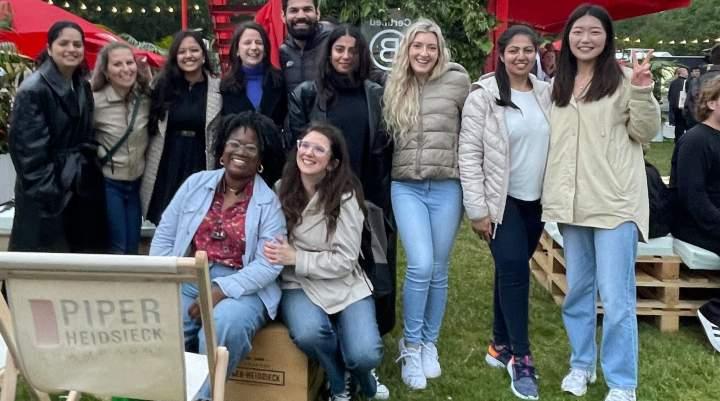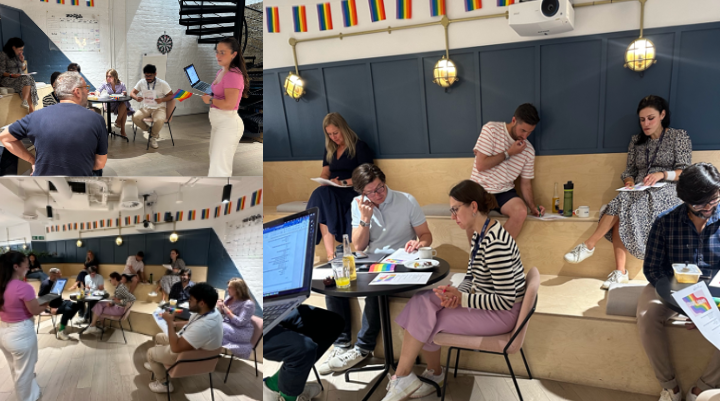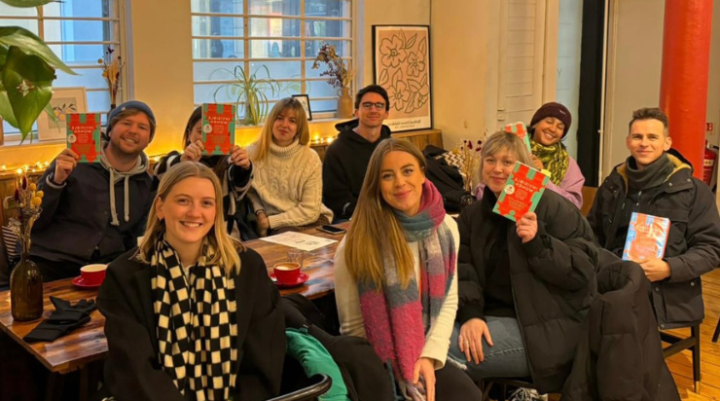
Pride in Practice with Microsoft Advertising
Communication, Education
Gender, Sexuality
Quick & easy
Overview
As LGBTQ+ identifying employees and allies of a small company recently acquired by Microsoft, we wanted to ensure our grassroots mentality of learning and sharing stayed strong. Creating and fostering safe-spaces is a core value of ours so we held an in-person 'Small Group Discussion' focused on the current state of media representation as it applies to gender and sexuality; questioned the ethics in implementing data collected on gender and sexuality; and examined best practices for how to best represent and engage an LGBTQ+ audience. We followed this with an off-premise social as holding space for these issues can be heavy, we like to punctuate these conversations with opportunities for celebratory fun.
What did you set out to achieve?
We observed that many corporate Pride events typically do not have a practical application to company mission and the work that we, as employees, do daily. It is well known that people are more likely to engage when they see an opportunity to directly contribute to impact, and we wanted to capture that energy. We knew that if we could understand and identify the issues within our own ecosystem, we could begin working towards practical solutions to put into practice during conversations with our clients and in building tools for our platform. We wanted to highlight broad Advertising issues such as rainbow washing and alternatively highlight LGBTQ+ advertising campaigns that felt successful. Next, we pulled focus onto the execution stage via ad tech, the need for, and creation of DE&I marketplaces, as well as curating diverse supply that will attract agencies and brands.
Describe how the initiative or campaign works?
Every year we are capturing more data through initiatives like the All In Census and Outvertising’s Consumer Report. A member of our community attended the launch of findings from Outvertising’s Consumer Report this year and was inspired to share them. Within DE&I we often discuss not ‘re-creating the wheel’ but rather expanding on the incredible work our peers are already doing. We saw an opportunity to share this data with a broader audience, specifically with individuals who have the power and influence to address the challenges we face within the advertising and ad tech industries.
What was the first step you took to get it off the ground?
Like all grassroots DE&I initiatives we pulled together a core group of individuals and delegated tasks. We ended up with a group of four and began collaborating via a Teams channel and shared documents. We divided up slide content creation, room booking, communication & calendar invites, and securing a reservation for our post-event social.
Who are the internal business partners you brought on board? Are there any external stakeholders you spoke to for advice?
Internally, we relied on support from an executive sponsor to promote our event. Historical data has shown that engaging senior stakeholders to sign-post events encourages higher employee attendance. Leading by example is a key element of driving awareness around DE&I, and we find when leaders and managers are engaged and in attendance, their team members are more likely to follow. Additionally, we checked in with Outvertising to ensure we had their permission to use their Consumer Report content for our discussion and presentation.
What budget/resource did you need?
Our main physical resource was a large on-site conference room with a round table that lends itself to discussion. As we kept this event in-person only, technical resources were limited to a USB cord and a large screen to project upon. We used a company credit card to secure our table reservation at a nearby establishment, but all food and drink were self-funded, which we made clear ahead of time.
How do you keep it going?
As our Small Group Discussions require little in the form of technical and fiscal resources, personnel are key. A critical piece of Inclusion is to keep the door wide open for members of your community to bring ideas that inspire them to the table. Employees should not have to be on an official DE&I board or hold a specific ‘role’ to propose an event. When we create easy and accessible methods to intake ideas from all individuals, our programming will organically become more diverse and intersectional. When people do come forward, ensure you are supporting them in the most practical ways. These individuals already have a passion to create content, but it is your job as a DE&I leader to set up calendar time to prep, define the audience, secure a space, help get invites out, etc.
Remember that the more people who pitch in the less burnout you will see within your DE&I space. Keep passing the baton in regard to who is pitching ideas and producing content for your Small Group Discussions and ensure one specific community or ERG is not gatekeeping the ability to suggest content and execute.

What positive impact has this initiative or campaign had?
It is incredible to see that even at the largest companies in the eco-system, like Microsoft, we can still put together grassroots events that are not backed by a specific community or ERG. This initiative was born through passionate individuals having a conversation about something that is going on within our industry daily. At times, these informal events can feel the most authentic and be the most impactful because they aren’t forced. Much like good advertising, people do not want to be told what to think or feel, they just want to see it in action and as a result, be inspired.
What did you learn that could help others?
For any Small Group Discussion in 2023 and beyond I highly recommend an in-person environment now that the option is fortunately available to us again. This will mean making your content ‘ready to use’ so other office locations can plug and play. We have seen first-hand how video and recording can tamper down what people are willing to share. It is much easier to be vulnerable and have an open conversation when you are in a physically safe space without cameras and recording devices. I also recommend choosing someone to capture takeaways, and leaving with a solid plan for holding people accountable or simply reminding them of the takeaways they were interested in pursuing.
How will you make the benefit of this initiative or campaign endure?
As we had representation from multiple parts of the business, we brainstormed some practical takeaways to present to our Product and Commercial teams. We would like to focus on onboarding more diverse supply while understanding where we may need features and controls flexed to ensure this supply is available and appealing to our buyers.


